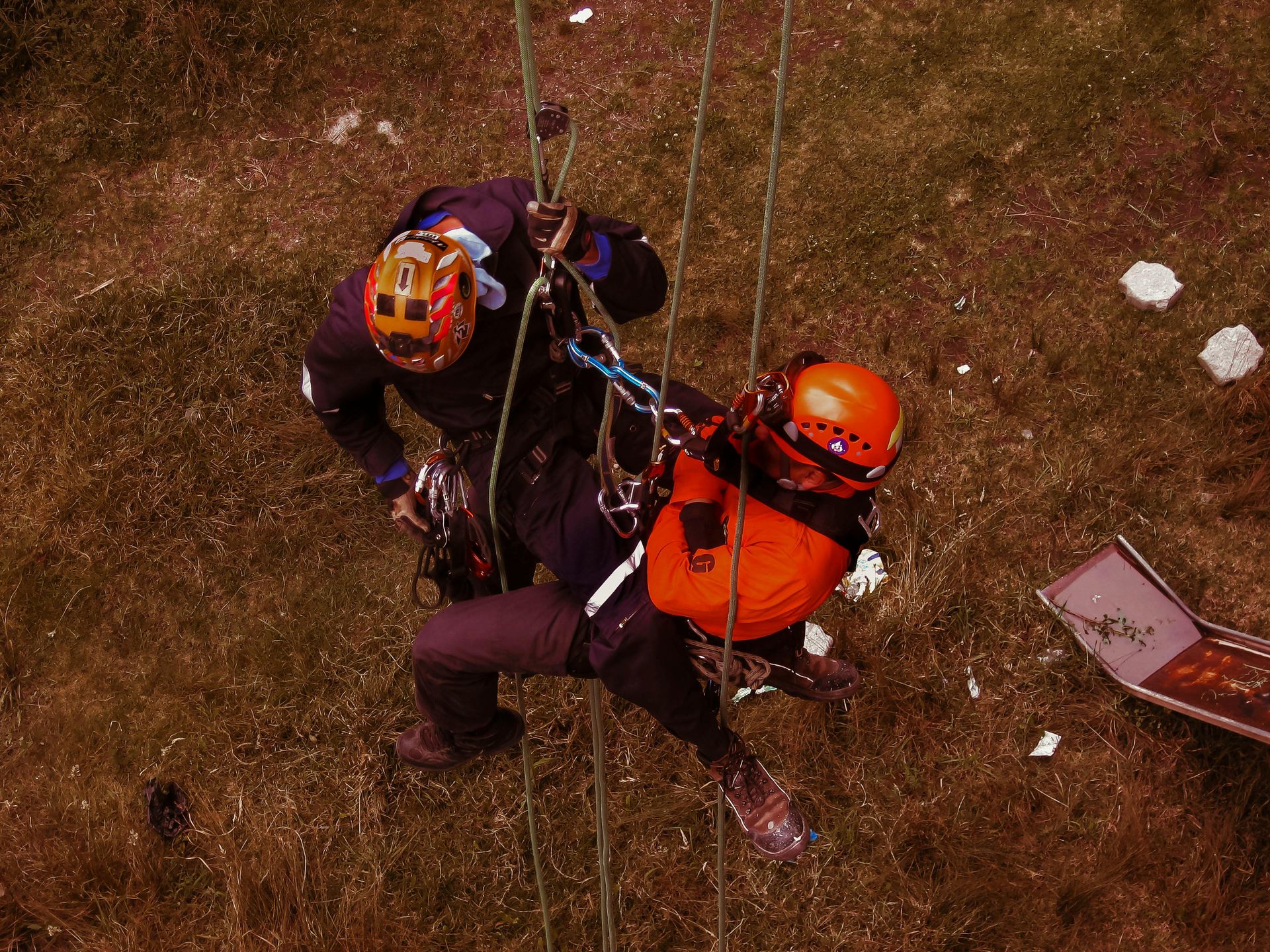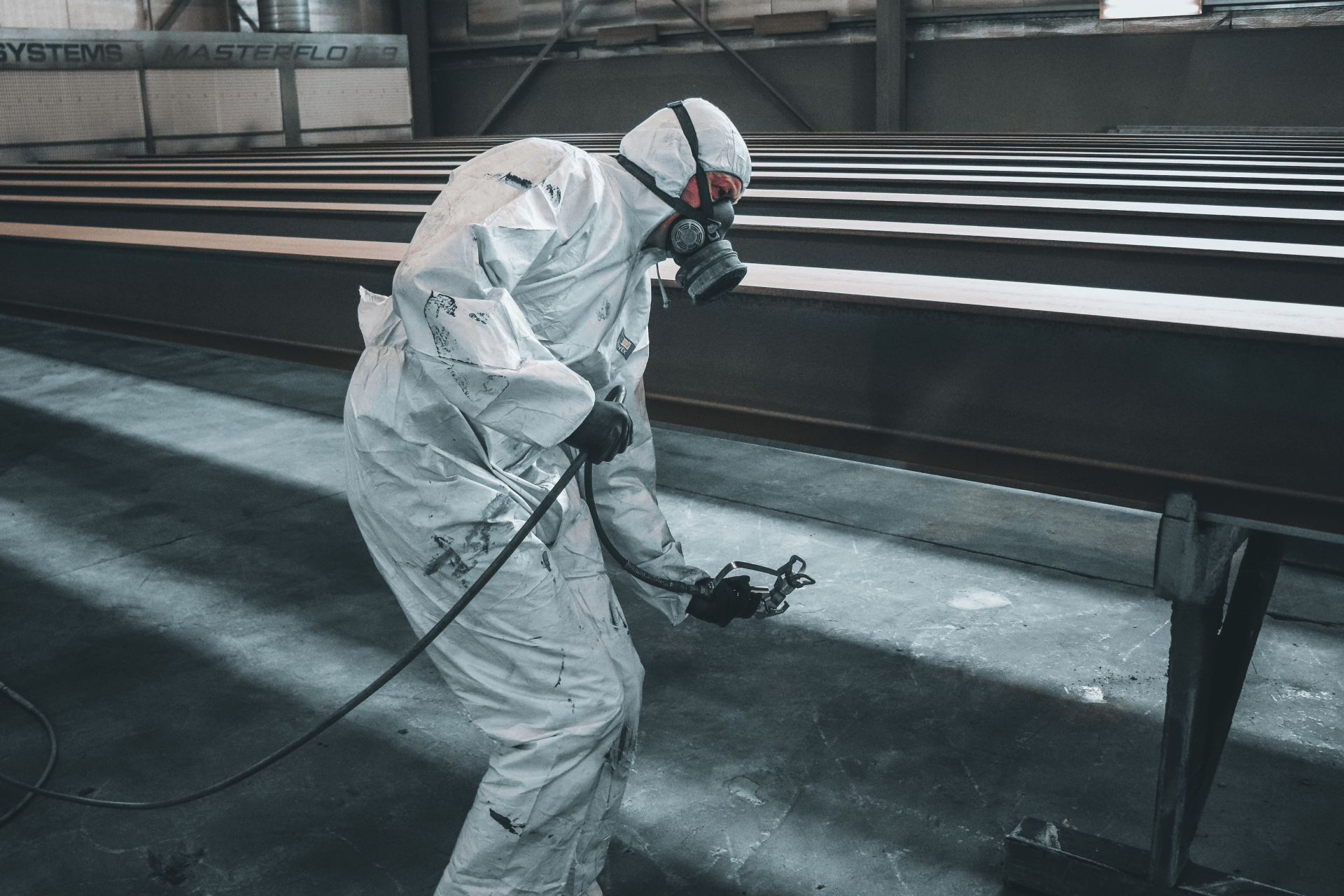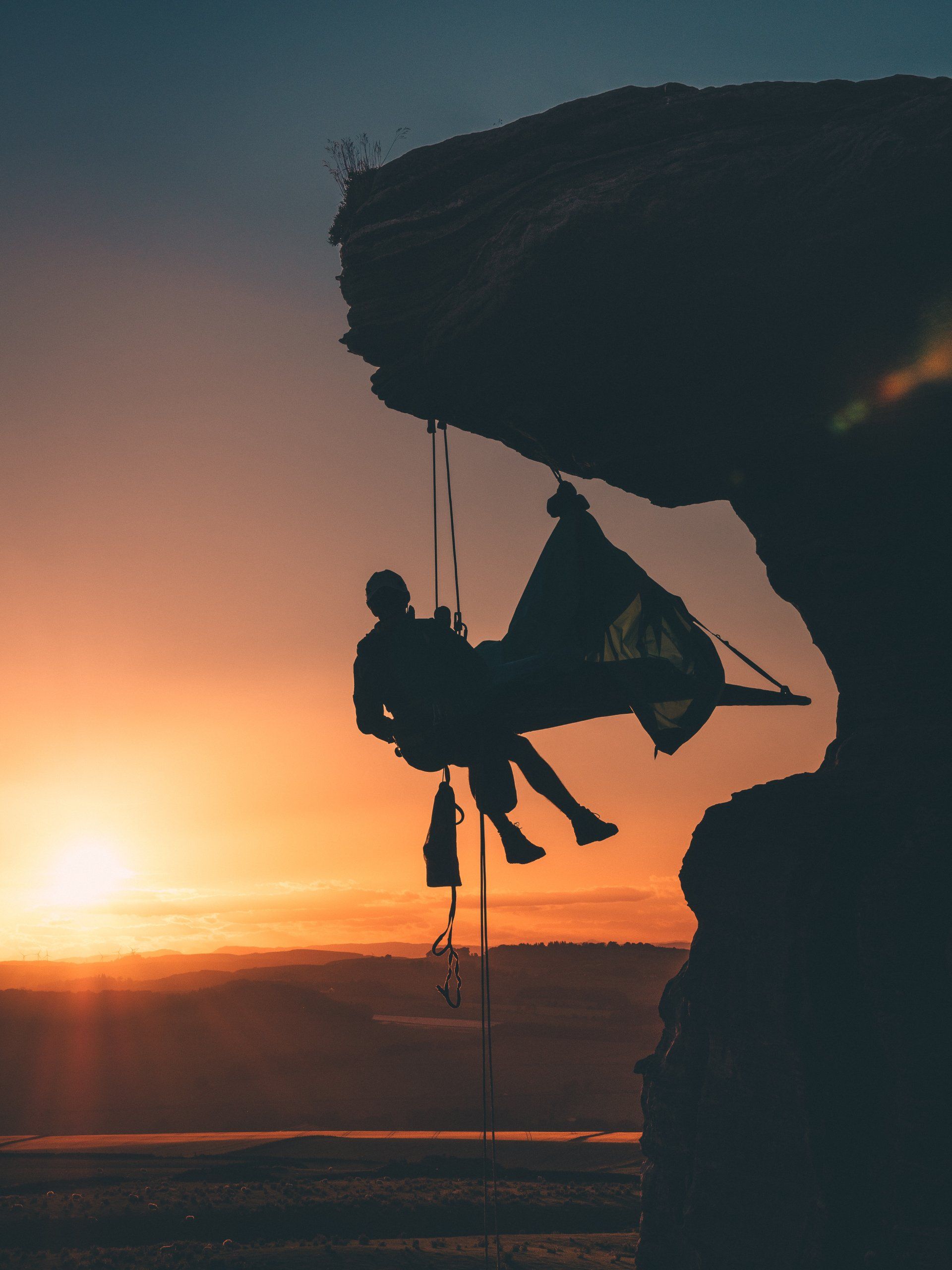IRATA Level 1 Training: A Beginner's Guide to Rope Access

IRATA Level 1: A Beginner’s Guide to Rope Access Training
Thinking about starting a career at height? This in-depth guide explains exactly what IRATA Level 1 involves—from prerequisites and the training week to assessment, revalidation, and where the qualification can take you.
Quick Guide to IRATA Level 1
- IRATA Level 1 is the globally recognised entry point for industrial rope access. Certification is valid for three years and can be revalidated on a regular cycle.
- At Dangle Academy, the course runs over six days: five full days of trainer-led practice and the independent assessment on day six.
- Minimum age 18 and medical/fitness suitability are required.
- To progress to Level 2 you’ll need 1,000 logged hours on ropes and 12 months at IRATA Level 1.
- Rope access work is always carried out under the IRATA International Code of Practice (ICoP), which mandates two-rope systems and rescue planning.
What is IRATA Level 1 and why does it matter?
IRATA (Industrial Rope Access Trade Association) sets the global benchmark for rope access training and safety. Its Training, Assessment and Certification Scheme (TACS) and International Code of Practice (ICoP) define how technicians are trained, supervised, and assessed, and how rope access work is planned and audited.
For you as a beginner, IRATA Level 1 is the essential first step. It proves you can carry out fundamental rope manoeuvres safely and reliably, always under the supervision of a qualified Level 3, while contributing effectively to real-world projects.
Who should take IRATA Level 1 training?
- New entrants to the work-at-height industry who want a recognised pathway into rope access
- Tradespeople (NDT, coatings, electrical, rigging, glazing, telecoms, geotechnical, etc.) seeking rope access as a way to apply their trade at height
- Outdoor enthusiasts (climbers, cavers, mountaineers) looking to transition into an industry career with professional structure and safety
- Anyone seeking international work opportunities - because IRATA Level 1 is recognised globally, it opens doors to jobs offshore, onshore, in wind energy, oil & gas, utilities, construction, and beyond
IRATA Level 1 prerequisites: age, fitness and paperwork
- Age: You must be 18 years or older on the first day of the course.
- Medical/Fitness: You must be physically fit and free from conditions that could affect safe work at height. A health declaration or occupational medical may be required.
- Experience: No previous rope access experience is required. IRATA Level 1 is designed for beginners.
IRATA Level 1 training: how the 6-day course is structured
At Dangle, we believe more rope time builds better technicians. That’s why our youtube rope access channel is packed full our useful educational videos and why our IRATA Level 1 course runs over six days, with five full days of trainer-led practice and the independent assessment on day six.
Here’s what a typical week looks like:
Day 1 — Foundations
- Induction and safety briefing
- Equipment identification, pre-use inspections, and harness fitting
- Core knots (figure-of-eight, alpine butterfly, clove hitch, etc.)
- First ascents and descents; controlled use of descenders and ascenders
Day 2 — Mobility & Changeovers
- Rope-to-rope transfers and safe changeovers between systems
- Deviations and re-belays to navigate obstacles and structure layouts
Day 3 — Work Positioning & Back-up
- Correct use of fall-arrest/back-up devices
- Edge management and tool handling techniques
- Work positioning to carry out simple tasks while suspended
Day 4 — Rescues & Consolidation
- Short-link rescues appropriate to IRATA Level 1
- Controlled hauling and lowering methods
- Written theory review and practice assessments
Day 5 — Extended Practice & Mock Assessment
- Full consolidation of all syllabus techniques
- Mock assessment under trainer supervision
- Final Q&A and troubleshooting to build confidence
Day 6 — Independent Assessment
- Practical examination of rope manoeuvres by an independent IRATA Assessor
- Safe working habits, correct use of equipment, and problem-solving under observation
- Short written test to confirm awareness of safety principles and IRATA systems
This structure allows trainees to enter assessment day calm, confident, and ready, having had maximum rope time and mentoring.
IRATA Level 1 syllabus: what you will learn
The course covers the following:
- Equipment knowledge and pre-use checks
- Ascending and descending techniques
- Changeovers between systems
- Rope-to-rope transfers
- Deviations and rebelays
- Basic rigging under supervision
- Hauling and lowering
- Basic rescue techniques suitable for IRATA Level 1
- Work positioning for tool handling
- Safety theory: risk assessment, method statements, toolbox talks, communications
IRATA Level 1 assessment: what to expect
Assessment is carried out by an independent IRATA Assessor on day six. You’ll be examined on:
- Practical rope manoeuvres from the Level 1 syllabus
- Equipment use, safety checks, and correct attachment
- Demonstrating good habits (back-ups, communication, connector management, edge safety)
- A short written test on key theoretical knowledge
Passing earns you the IRATA Level 1 certificate, photo ID card and logbook—the essentials to start work and to log your hours for progression.
IRATA Level 1 certification validity and revalidation
- Your IRATA Level 1 certificate is valid for three years.
- To stay current, you must revalidate before expiry at the same or higher level.
- If you’ve been away from rope access work for more than 180 days, refresher training is required before returning to site.
Progression after IRATA Level 1: moving to Level 2 and Level 3
The IRATA framework ensures progression is based on real experience:
- IRATA Level 2: Requires at least 1,000 logged hours and 12 months as a Level 1, plus training and assessment to the Level 2 syllabus.
- IRATA Level 3: Requires at least 1,000 logged hours and 12 months as a Level 2, additional requirements such as first aid, and successful assessment at supervisory level.
IRATA Level 1 career opportunities
Completing IRATA Level 1 gives you access to work in sectors such as:
- Wind energy: blade inspections, turbine maintenance, cable installation
- Oil & gas: offshore and onshore maintenance, NDT, painting, rigging support
- Construction & infrastructure: glazing, façade work, sealing, painting, inspections
- Telecoms & utilities: tower climbing, antenna work, cabling
- Geotechnical: slope stabilisation, rock scaling, protective netting
- Events & entertainment: rigging for stages, arenas and film production
Tip: Rope access is a platform, not the job itself. To maximise employability, combine IRATA Level 1 with a trade skill such as coatings, NDT, rigging, or electrical work.
What employers look for in new IRATA Level 1 technicians
- A neat and accurate IRATA logbook with signed entries
- A strong safety-first attitude and team focus
- Reliability, punctuality, and willingness to learn
- Trade add-ons (NDT, Train the Painter, confined space, rigging tickets)
- Good physical fitness and resilience in challenging environments
How to prepare for IRATA Level 1 training
- Fitness: build core strength, grip endurance, and flexibility
- Knots: practise figure-of-eight, alpine butterfly, clove hitch, and stopper knots
- Read ahead: skim IRATA’s ICoP or TACS for familiarity
- Equipment awareness: understand the basics of harnesses, helmets, carabiners
- Mindset: be ready for long, practical days and a professional learning environment
Equipment used during IRATA Level 1 training
The training centre provides all equipment, including:
- Sit harness and chest harness
- Two ropes (working rope and safety rope)
- Descender and ascenders
- Certified back-up device
- Cow’s tails/lanyards and connectors
- Helmet and protective gear
- Edge protection
You’ll also learn to inspect equipment pre-use, understand lifespan and retirement criteria, and keep gear safe between jobs.
IRATA Level 1 safety and the system of work
All rope access jobs follow the IRATA International Code of Practice (ICoP), which requires:
- A two-rope system (working + safety rope)
- Comprehensive risk assessments and method statements
- Supervision by qualified Level 3 technicians
- A rescue plan in place before work starts
- Strict equipment inspection, control, and documentation
As a IRATA Level 1 technician, your role is to perform manoeuvres safely under supervision, communicate clearly, and report concerns immediately.
Your first year after IRATA Level 1: what to focus on
- Build logged hours steadily, under good supervision
- Add employability boosters (Train the Painter, NDT, rigging)
- Maintain your logbook meticulously
- Stay current through refreshers and toolbox talks
- Plan your next upgrade to Level 2 after 12 months and 1,000 hours
IRATA Level 1 FAQs
How long does the IRATA Level 1 course take?
At Dangle Academy, it takes six days: five full days of training, and the independent assessment on day six.
How long is my IRATA certification valid?
Three years, after which you must revalidate.
What do I need to move to IRATA Level 2?
To move to IRATA Level 2, you need to have logged at least 1000 hours and 12 months at Level 1.
Do I need to be physically strong?
Not necessarily - Rope Access is more about technique and efficiency than brute force although a good standard of physical fitness is needed.
Is IRATA recognised globally?
Yes - IRATA Level 1 is recognised worldwide, making it one of the most portable work-at-height qualifications.
Why Choose Dangle’s Academy?
Here at Dangle, we pride ourselves on offering a wide range of professional and comprehensive inspection, access, coatings, and composite (IACC) industrial services and training courses to cater to the needs of both the private and public sectors. Our dedication to providing high-quality work at height solutions and training has helped us establish a strong reputation in the industry.
With a team of highly skilled and experienced professionals, we are committed to delivering exceptional results that not only meet but exceed our clients' expectations. Our on-site working at height services are designed to minimise maintenance costs in the long and short-term, allowing our clients to save on valuable resources.
Located in Belfast, Northern Ireland, our headquarters serve as the centre of our operations across Ireland. However, we also have a Dangle office based in Scotland, ensuring that we can extend our services to a wider clientele across the United Kingdom. No matter where you are located, our team is always ready to assist you with your industrial maintenance or training needs.
If you would like to learn more about how our dedicated team can help you, we encourage you to get in touch with us today. Our friendly and professional staff are always available to provide you with the information and support you require.
We'd Love a Share...
You might also like


